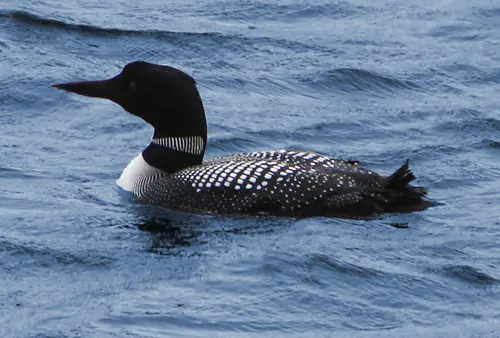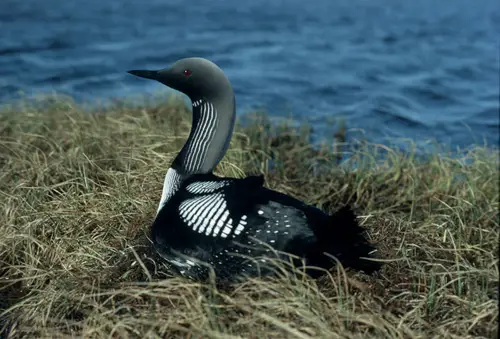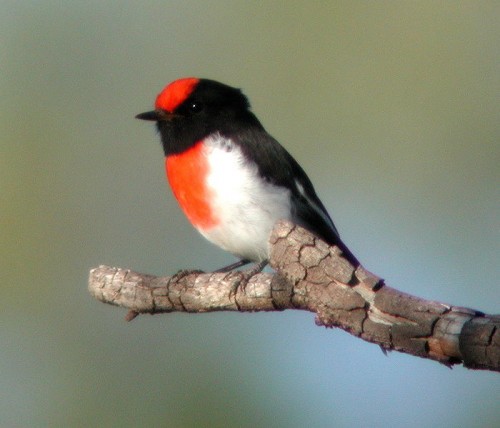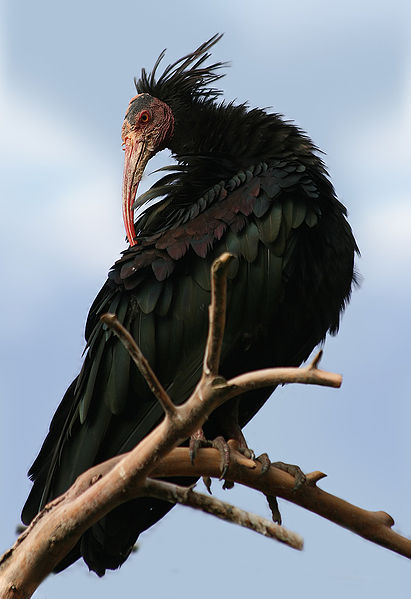Loon
Loons are aquatic birds that are native to North America and Europe.
A loon is just about the size of a small duck, and that is what it looks like when swimming.
The loon’s feathers are black-and-white, with grey on the head and a white belly and a very pointed spear shaped bill.

Loon Swimming
Loons are incredible swimmers and use their feet to push themselves along, both under and over water. Their feet rest well back on the body and make them fairly defenseless on land.
Loons are very good fliers but have some trouble taking off due to the foot placement.
Once in the air, they have stamina and tenacity which permits them to fly extremely long distances.
They may migrate several thousand miles in all.
Loons may live as long as thirty years in the wild.
Loons eat fish, frogs and crayfish, which they take from under the water.
They use the pointed bill to gather up the prey by stabbing it. They will then grasp it in the bill, toss it lightly and eat it head first to help in swallowing.
Loons are sight hunters and so prefer the waters of cold lakes as they are clearer and easier to find prey in.
Loons have no teeth to chew and so will swallow small pebbles, which go to the gizzard where they are used to help crush the prey items in lieu of chewing them.
During the summer, loons nest on fresh water lakes or sometimes ponds or small bodies of water such as creeks. The smaller water areas will usually have only one nesting pair, while larger areas will have more, but each only uses a certain section of the lake and the land surrounding it.
Loons build their nests very close to the waterline, preferring the same site that they used several yeas and sites that are surrounded by water. They will build nests with a large variety of items such as grasses and mud.
Both parents help with the nest building and both also help to incubate the babies. The incubation usually lasts about a month.
If the nest is disturbed or the eggs are taken the same pair will re-nest, usually in the same areas.
Usually one or two eggs are laid in June. Loon babies are able to swim as son as they are born, but very often will ride the waves on their parent’s backs.
This permits them to rest and protects them from fish and predators such as snapping turtles.
After the first day or so, chicks do not return to the nest at night, but stay on the lake with their parents.

Loon
They are fed for the first few weeks and about eight weeks will begin to take some of their own food by hunting. Within two months they are able to hunt on their own and to fly by about three months.
Pairs of loons will very often mate for life, and re-nest in the same place if they are able year after year.
The Native Americans considered the loon sacred and thought it was the spirit of old allies, because of its haunting wailing sound.
To hear the haunting cry of the loon click here.


